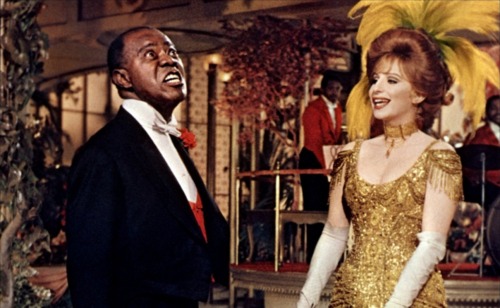 By Armond White
By Armond White
Funny that the Film Society of Lincoln Center paid tribute to Barbra Streisand on April 22 with its 40-year-old Chaplin Award even though Streisand’s movies are not the kind typically shown in Film Society programming. As a fundraiser, it was unparalleled. Co-chair of the event, Ann Tenenbaum announced that it had raised $2 million, twice as much as the highest amount in the history of the annual event. This confirmed the shrewd choice to honor home girl Streisand just as Brooklyn’s Barclay’s Center featured the Funny Girl star to initiate its opening last Fall.
But there were also good reasoning to the Film Society’s decision: Streisand is the last old-fashioned movie star of the sort first celebrated by Lincoln Center; such Hollywood personages as Charlie Chaplin, Claudette Colbert, Audrey Hepburn, Gregory Peck whose work represented the legacy of American movies–stars rather than auteurs.
The popular appeal of stars balanced the Film Society’s standard dedication to the work of auteurs. For the general public, stars are the face of auteurs (Dietrich for Sternberg, John Wayne for John Ford, James Stewart for Anthony Mann or Hitchcock). Pragmatic film enthusiasts understand that institutions like the Film Society must acknowledge this double standard, Not just fun for patrons, it’s a way of staying solvent, keeping cinema popular as movies. Streisand’s popularity and potency as a film actress is based in how she elicits people’s empathy; Pauline Kael ascribed her instant movie stardom to being “both an archetype and an original.”
This is why honoring Streisand was a sure-fire $2 million bet. But the glittery evening included former President of the United States Bill Clinton presenting the Chaplin Award to Streisand, less obtrusive than Michelle Obama at the Oscar yet threatening the evening with possible political pontificating which Streisand herself graciously avoided (although Clinton’s inadvertent sexual gaffe and pointing to Hillary Clinton in the audience got the biggest ovation of the night).
It would be great if the Film Society scheduled retrospective public screeners for its honorees. Instead, the clips shown to recall Streisand’s film career were curiously unconvincing about her contribution to cinema. The inevitable let down of moving from her electrifying 1968 film debut in Funny Girl to her subdued matronly performances in drab movies like Meet the Fokkers and The Guilt Trip failed to convincingly illustrate Streisand’s cinematic achievement. It certainly isn’t as a director; President Clinton’s proclamation that her three directorial efforts Yentl, The Prince of Tides and The Mirror Has Two Faces were “magnificent” only showed that a politician is not a critic.
Streisand’s musical dynamism, womanly warmth, Jewish humanism and lovely speaking voice make her an outstanding Hollywood star who won audiences over with the class identification of a Cagney, the romantic idealism of a Garbo, the bravura of an Olivier. But too often the Lincoln Center tribute lapsed into standard superstar worship–mentioning EGOT (her winning of the Emmy, the Grammy, the Oscar and the Tony) rather than specifying such bold achievements as Up the Sandbox.
There are three iconic moments in Streisand’s film career: the tugboat passing the Statue of Liberty climax of “Don’t Rain on My Parade” in Funny Girl, the virtuoso live performance of “My Man” at the finale of that film and her duet with Louis Armstrong in Hello, Dolly! Only one of these iconic moments were part of the clip selections. Oddly, Wynton Marsalis’ wordless live performance of “Hello, Dolly!” seemed more a race man’s tribute to Armstrong than an acknowledgement of Streisand’s participation in one of pop culture’s racially integrated epiphanies. Hello, Dolly!, unfairly underrated, showcases Streisand’s radical immediacy, transcending her potential miscasting; her duet with Armstrong–who had a chart-topping success with the title song–made the film startlingly modern, timeless. This aesthetic and historic triumph is exactly what the Film Society is perfectly situated to uphold–and Marsalis understood it.
When the evening resorted to Streisand adoration as “beautiful,” “genius,” “hyphenate,” “perfectionist” (her own terms) it went too far without going where it needed to go. Comparisons to Chaplin were inapt, except to note Streisand’s undeniable prominence as a globally admired cultural figure–although not as a genius filmmaker. As filmmaking, her three directorial efforts range from mediocre to abysmal.
Seeing a movie star’s deification is unwarranted and tasteless. (It gives rise to more of Streisand’s unseemly egotism.) Streisand watchers know that Up the Sandbox’s surreal/verite aesthetic innovations (by director Irvin Kershner and cinematographer Gordon Willis) and challenge to political correctness (“If that’s what being a mother means I turn in my ovaries!”) are more meaningful than the chick flick sappiness of The Way We Were. The latter (plus A Star is Born) may always attract undemanding viewers, but Streisand’s early film work such as energizing the conventional comedy The Owl and the Pussycat and last-gasp preservation of the movie musical genre–particularly in Vincente Minnelli’s metaphysically profound On A Clear Day You Can See Forever–are successes that matter more than her celebrity status.
Follow Armond White on Twitter at 3xchair
